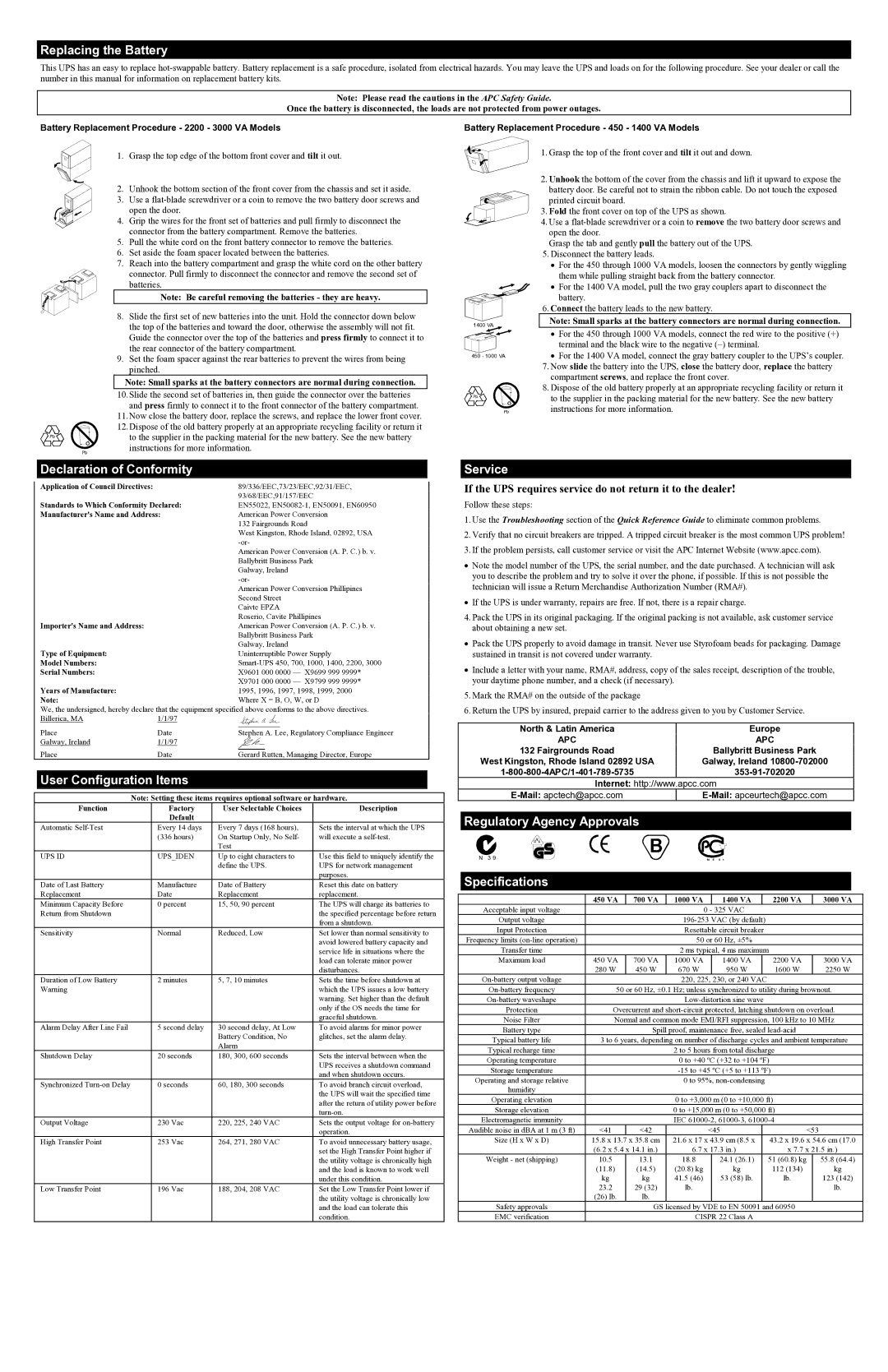Smart-UPS 700, Smart-UPS 450, Smart-UPS 1000, Smart-UPS 2200, Smart-UPS 3000 specifications
APC Smart-UPS series is renowned for its reliability and efficiency in providing backup power solutions for both home and professional environments. Among the popular models are the Smart-UPS 1000, 1400, 2200, 3000, and 450. Each model caters to specific power requirements while sharing several core features.The APC Smart-UPS 1000 is an excellent choice for users who need dependable power for small business devices or home office equipment. With a power capacity of 1000VA/600W, it offers line-interactive technology that provides automatic voltage regulation, ensuring clean and consistent power delivery. The Smart-UPS 1000 includes USB and serial ports for communication, allowing users to monitor the UPS status via a computer. Its compact design makes it ideal for limited spaces.
Moving up the range, the Smart-UPS 1400 offers increased capacity at 1400VA/980W. This model provides similar benefits, such as AVR, but includes a higher number of outlets for additional devices. Its LCD interface allows users to easily view operational and battery status. The Smart-UPS 1400 is suited for medium-sized networks and provides runtime extension capabilities through optional external battery packs.
For larger applications, the Smart-UPS 2200 delivers 2200VA/1980W of power. Tailored for critical equipment, it boasts advanced features such as hot-swappable batteries, enabling users to replace batteries without interrupting operations. Its superior AVR technology and an intuitive LCD display enhance its usability and efficiency. This model supports smart slot communication options, allowing for customizable monitoring solutions.
The Smart-UPS 3000 takes things a step further with a robust 3000VA/2700W power capacity. This model is designed for both large networks and server environments. It also features a standard rack-mountable design, ensuring versatility for varying setups. Smart-UPS 3000 includes intelligent battery management systems for improved performance and lifespan.
Finally, the Smart-UPS 450 caters to lighter workloads with a 450VA/260W capacity. This model is perfect for desktop computers, networking devices, and point-of-sale systems. It offers essential features such as surge protection and dependable battery backup, ensuring sensitive data is protected during power outages.
In conclusion, the APC Smart-UPS series encompasses a range of models designed to meet diverse power needs. With advanced technologies, including line-interactive technology, AVR, and smart management, these UPS systems are tailored for optimal performance and reliability in today’s power-dependent environment.

